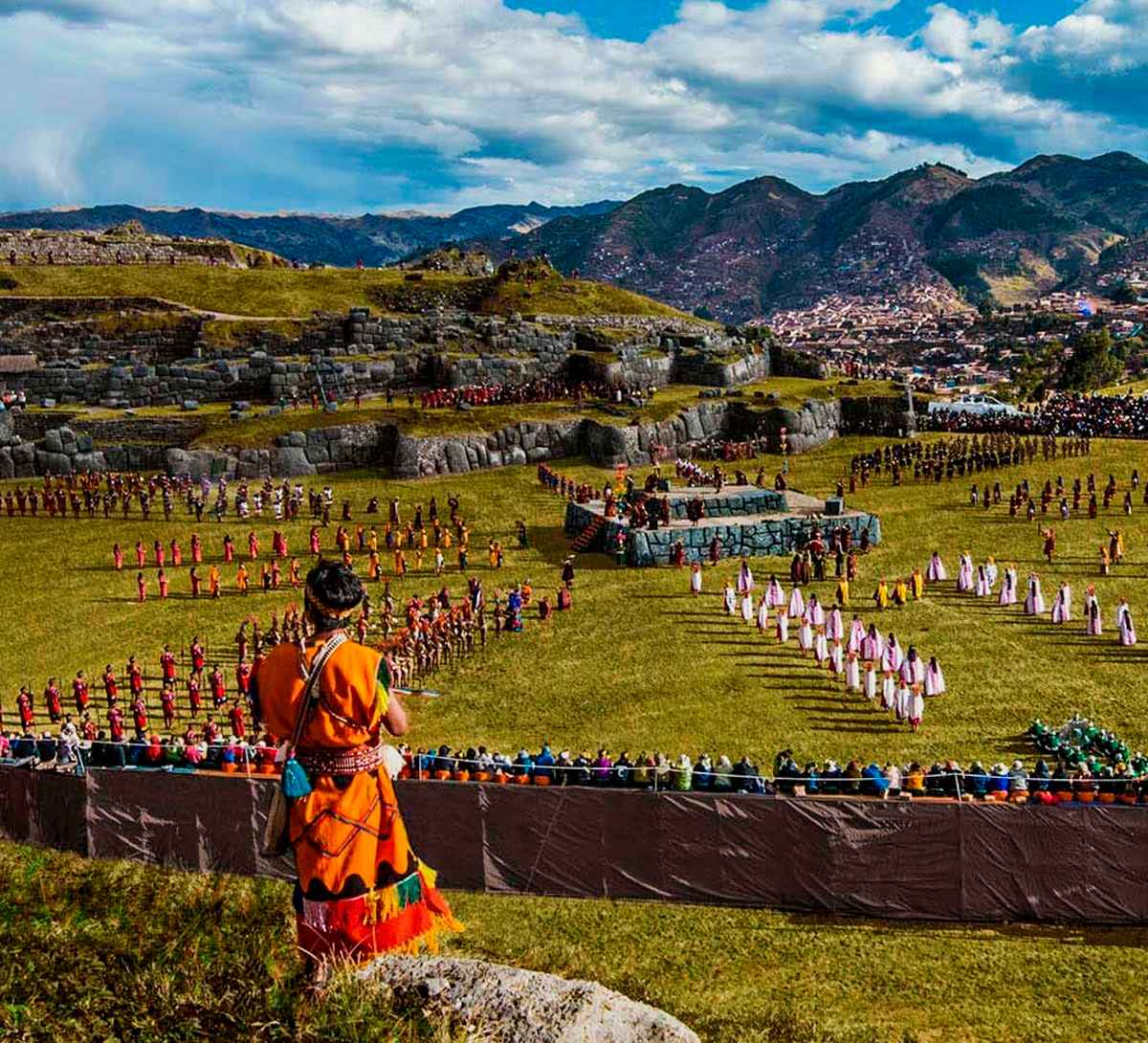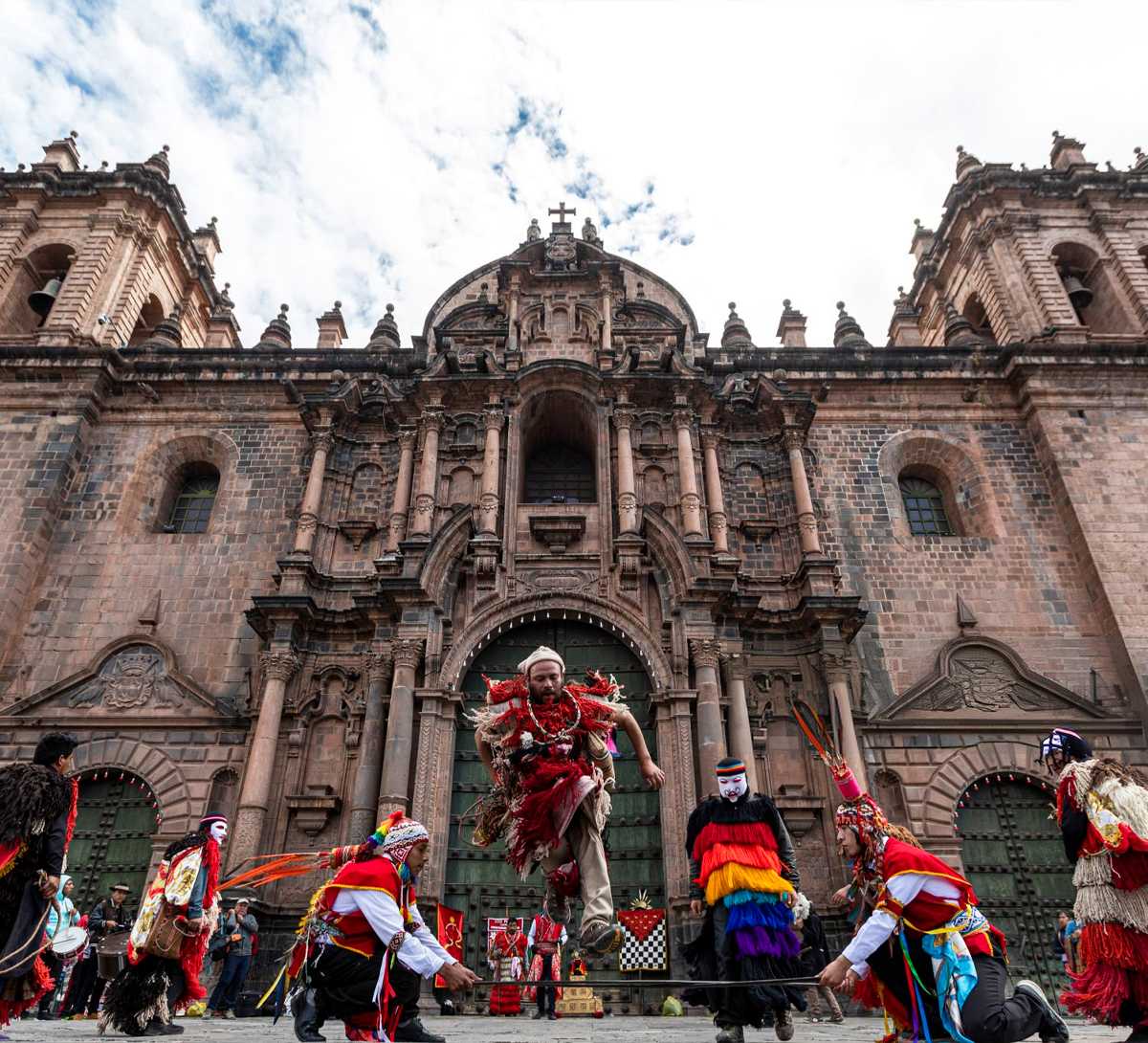
Possibly the most sacred and important building in the Tahuantinsuyo empire was the Coricancha, also known as the Temple of the Sun. During the time of the conquest, the temple was destroyed and looted. On its base, the church and convent of Santo Domingo was built. Currently, there is a museum with all the Inca pieces that were found there during the excavations.
In the heart of Cusco's historical area, at the junction of El Sol Avenue and Santo Domingo Street, sits the Qoricancha, a former Inca Sun temple. In this same place is the current Santo Domingo Plaza, which is part of the grounds of the temple and monastery of the same name.
According to the Inca conception, the Coricancha was the religious center of Cusco, geographic and political center. The temple of the Qorikancha, was the place where he paid homage to the highest Inca god the "Inti" (sun). "Qori" means worked gold, its Castilianized form is cori. "Kancha" means fenced place, bounded by walls. Hence, the name corresponds approximately to "fenced place that contains gold."
Research suggests that the Coricancha existed before Inca times. Its original name was Inticancha (Temple of the Sun) and its original walls were made by the Ayamarcas in the 13th century, approximately.
In the 15th century, when the Inca emperor Pachacutec assumed power, beautification works were carried out throughout the city of Cusco Peru. The Inticancha was renamed Coricancha. Huge walls were built (the finest in the entire empire) and lined with sheets of gold, silver and precious stones.
The Coricancha housed shrines to the different Inca gods. The most important was the shrine to the sun. It is believed that it was surrounded by gold while the temple of the moon, silver.
In the 16th century, after the Spanish invasion, the koricancha was looted. Some chroniclers suggest that the gold was transferred to Cajamarca to pay for Atahualpa's ransom.
The temple was owned by Francisco Pizarro who assigned it to the Dominican order who built the church and convent of Santo Domingo.
Throughout their history, both structures (the Coricancha and the Santo Domingo church) suffered up to three earthquakes of intense magnitude. Only the Christian temple suffered considerable damage. The Coricancha is still intact.
According to historians, the first name of this religious site was Intikancha, which means Temple of the Sun. Although the date of its construction is not established with certainty, it is believed that it occurred during the government of the Inca Pachacutec -15th century- who, as part of the remodeling and beautification of the city of Cusco, ordered the name change to Coricancha and its restoration that included the construction of enormous walls (the finest in the entire Empire) and the cladding with gold sheets; this in order to give a greater majesty and a sacred character to the enclosure.
Before the arrival of the Spanish, the temple housed a large number of rooms that fulfilled different functions and a vast open courtyard located in the center. Only religious and members of the nobility entered the interior, while the rest of the population could worship the gods through offerings - gold utensils, spondylus shells and coca leaves - in the gardens on the ground floor. Over time, citizens were allowed to enter on the condition of being on an empty stomach, barefoot and with some bundle or weight loaded on their back, as a sign of humility.
Qoricancha's creation was a gradual process, happening in stages over time. During the Inca Empire, it was conceived as the main temple dedicated to the god Inti, the Sun, and was one of the most important religious centers of the Tahuantinsuyu. With the arrival of the Spanish, the site was transformed: the Temple and Convent of Santo Domingo were built on its solid Inca walls as part of the imposition of Christianity.
After the 1950 earthquake, many of the colonial structures collapsed, revealing impressive Inca walls that had withstood the quake. This led to the creation of a site museum, partially replacing the old convent. Today, Qoricancha represents a valuable example of the fusion and overlapping of two cultures, the Inca and the Hispanic, coexisting in the same architectural space.
The description made by Garcilaso is in harmony with what is still standing today. Although this is only a pale reflection of what the Qorikancha actually was in Inca times.
It was the main Temple of the entire Qorikancha, it occupied more than half the width of the current Church of Santo Domingo. Garcilaso tells that inside this temple the embalmed bodies of the children of the Sun were found, placed by antiquity on chairs and on gold tables, the walls were covered with gold plates, there being a disk representing the figure of the Sun from a gold plate thicker than the other plates that covered the temple. At the western end it corresponds to the current drum overlooking Av. Sol; its eastern end reached up to the current atrium of the church.
This temple was closer to the Temple of the Sun, since the Moon was considered the wife of the Sun. This building was lined with silver planks, with a representation of the Moon made in silver. Inside the mummies of the Coyas were kept, arranged in order of antiquity. Approximately half of the Temple was demolished by the Spanish to build the nave of the Santo Domingo church. It occupies part of the western side of the inner courtyard of the Qorikancha.
It is located near the Temple of the Moon, but separated by a beautiful alley, dedicated to Venus and the seven white goats and all the other stars. The Incas called Venus "Chasca" which means star. In this temple Inca was located, according to references by historians, to be divinized or to witness festivals or sacrifices made in the rectangular courtyard. It occupies part of the western side of the inner courtyard of the Qorikancha.
Illapa or ChukiIllapa mean lightning, lightning and thunder at the same time. The temple in question is in front of the temple of Venus, it has three simple jamb doors, equidistant and slightly trapezoidal, also has a window on each side wall.
In this temple the Rainbow was worshiped, which according to ancient belief came from the Sun. It has the same architectural characteristics as the Temple of Illapa. A part of this temple was demolished by the Spanish to build the buildings of the Dominican Convent. It is north of the Temple of Illapa and opposite the Temple of the Moon, on the eastern side of the inner courtyard of the Qorikancha.
Almost all the peoples of the world, in all ages, in front of their temples built wide squares. Intipanpa or Intipampa (name that translates as Plain of the Sun) is the place where the nobles stayed, their courts, service personnel, dancers, etc. when in the course of festivals the Inca and the nobility moved to the Qorikancha. This place currently corresponds to the Plaza de Santo Domingo, apparently its limits and extension have hardly changed. It is located the North of what was the Qorikancha.
It became the great depository of offerings that all the subject and confederate nations brought to the Sun god, the offerings consisted of representations of flora and fauna of the Tahuantinsuyo. According to some historians, these offerings made of gold and silver were life-size and there were so many that they filled the terraces in such a surprising way that the Spanish called it The Solar Garden. In colonial times it became a garden for the Dominican friars. It is located in the western part of the Qorikancha, it can be seen from Av. Sol in its entirety.
There were 5 sources of water, the origins of the water from the sources was a kept secret. The fountains had religious significance and were decorated with precious metals. They were located in the entire extension of the Qorikancha, currently we can see a fountain with octagonal corners in the courtyard of the Qorikancha.
Tradition tells that during the war between the Incas and the Chancas, the god Inti appeared in human form to the Inca Pachacútec. In his vision, the god showed him a shining mirror reflecting the lands he was to conquer, instilling in him courage and determination. Inspired by this mystical encounter, Pachacútec consecrated the Sun as the supreme deity of the Empire, consolidating his cult and strengthening the expansion of Tahuantinsuyu.
During the rescue of the Inca Atahualpa in 1533–1534, Spanish conquistadors looted Qoricancha, taking a large quantity of gold and silver treasures that decorated the temple. Among the most valuable objects were gold plaques that covered the walls and a sacred idol called Punchao, a representation of the Sun God. This figure was later captured along with Túpac Amaru Inca and sent to Spain, where its historical trace was lost.
Inti Raymi 2025, one of the most important festivals on the Inca calendar, was traditionally celebrated on June 21st, coinciding with the winter solstice. It was instituted by Inca Pachacútec around 1430 AD as a ceremony in honor of the sun god. Today, this celebration has been revitalized and is held annually on June 24th. The reenactment begins at Qoricancha, continues through the Plaza de Armas, and culminates in a grand spectacle on the esplanade of Sacsayhuaman, attracting thousands of visitors.
Qhapaq Raymi, celebrated during the summer solstice (December 22nd), marked the beginning of the agricultural cycle in the Andean world. During this ceremony, rituals and offerings were made to the sun, represented by the statue of Punchao. According to tradition, the first rays of the sun emerging from the Ausangate apu directly illuminated Qoricancha—a sacred moment that signaled the start of Mahuay Tarpuy, the time of sowing. This festival reaffirmed the deep connection between the spiritual, the natural, and the everyday aspects of Inca life.
 |
 |
After the excavation work carried out in the archaeological site of Coricancha, the site museum was created with the objects found during the works. The museum consists of five rooms with different ceramic pieces, tools and even bone remains. The museum also displays informational panels that explain the Inca lifestyle from its beginnings to its conquest.
The museum is located under the esplanade of the archaeological site of Coricancha. It can be reached by walking from the Plaza de Armas of Cusco following El Sol Avenue for a few blocks.
Entrance to the Coricancha site museum is included in the Cusco Tourist Ticket. The cost of this ticket is 70 Peruvian soles (22 US dollars) and also includes access to: Regional Historical Museum, Museum of Contemporary Art, Monument to Pachacutec, Museum of Popular Art, Qosqo Center for Native Art, Tipón Archaeological Park and Archaeological Park of Piquillacta.
The Santo Domingo Convent is located next to the entrance door to the Coricancha Temple. You can get there walking from the Plaza de Armas of Cusco.
After the sacking of the Coricancha temple by the Spanish in the 16th century, as happened with all Inca temples, a religious order was in charge of the construction of a Catholic religious temple to replace the Inca gods with those of the West.
It was Juan Pizarro (Francisco Pizarro's brother) who gave the Coricancha to the Dominican congregation in 1534. They built the church on the ruins of the Inca site. The construction of the religious temple took approximately one hundred years.
The church of Santo Domingo del Cusco suffered severe damage after the earthquake of 1650. The same happened with the earthquake of 1950. The reconstructions took several years to take its current form in 3 naves with a dome and various ornaments of wood, gold and silver .
Despite all the earthquakes, the Inca site of Coricancha did not suffer any damage.
